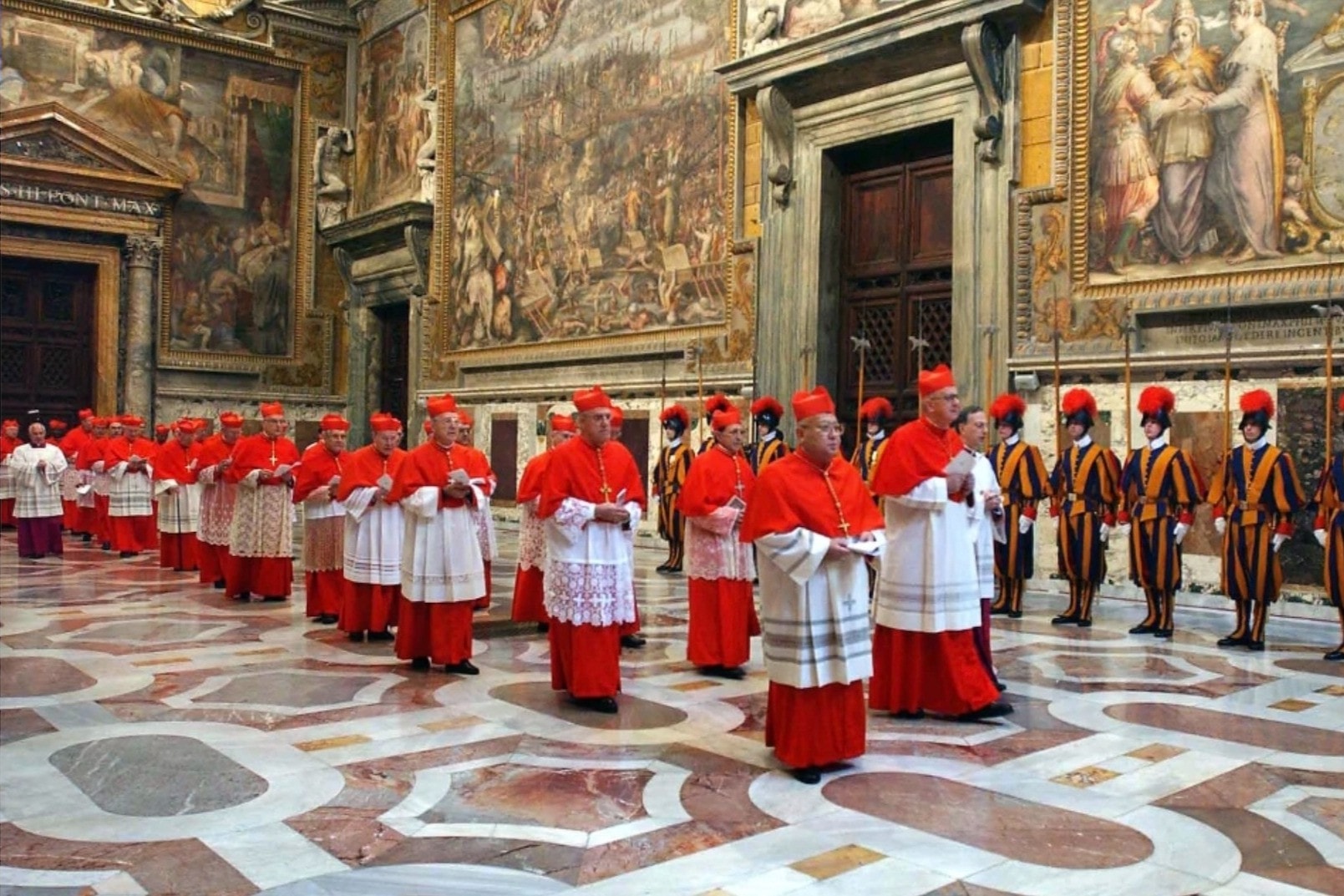After Pope Francis' death, the Roman Catholic Church will begin the process of electing a new leader through a 'Conclave of Cardinals' - a closed-door meeting that usually takes place 15-20 days after the Pope's death.

Several cardinals have emerged as leading candidates. According to observers, Cardinal Luis Antonio Tagle, 67, of the Philippines; Cardinal Pietro Parolin, 70, of Italy; Cardinal Peter Turkson, 76, of Ghana; Cardinal Peter Erdo, 72, of Hungary; and Cardinal Angelo Scola, 82, of Italy, are the prominent names for the position of successor to Pope Francis.
According to the Guardian, the new Pope will be elected by the College of Cardinals, the highest-ranking figures in the Catholic Church. These people will travel to Rome in the next few days to participate in the Conclave, a closed meeting of the College of Cardinals to elect the Bishop of Rome, who will become the new Pope.
The conclave not only selects the next leader of 1.37 billion Catholics, but also sets the course for the church’s doctrine, transparency and approach to the faithful. Pope Francis has made significant changes since taking office, focusing on social justice, environmental issues and a more inclusive church.
Will the new leader continue the progressive reforms initiated by Pope Francis or revert to conservative theology? The answer will become clear when the symbolic white smoke rises from the Sistine Chapel.
The election of the new Pope will follow a centuries-old Vatican tradition. More than 220 cardinals from more than 70 countries will gather at the Vatican, but only about 120 under the age of 80 will be eligible to vote. Cardinals will not be able to vote for themselves.
Two-thirds of the cardinal electors were selected by Pope Francis in the past 10 years and largely reflect his vision of a more inclusive church.
Once the cardinals are in Rome, they will gather in the Sistine Chapel for a discussion. After the declaration of "Extra Omnes", only the cardinals with voting rights and the doctor will remain. Everyone else will be asked to leave and the chapel doors will be locked.
Cardinals are sworn to absolute secrecy and will not be allowed to contact the outside world during the process of electing a new pope. Their phones will be confiscated and they will not be allowed to listen to the radio, watch television or read newspapers. Communication via letters and text messages is also prohibited. In addition, the chapel will be checked for listening devices before and during the conclave.
The cardinals will eat and sleep in St Martha's Residence, near the Sistine Chapel, where Pope Francis has lived for the past 12 years.
The conclave begins with a Mass, followed by discussions and voting. There can be up to four votes each day, in the morning and in the afternoon, until a candidate receives two-thirds of the votes. After days 2, 3 and 4 of the conclave, there is a day off for prayer and reflection. If there is no clear result after 30 votes, a candidate is elected by simple majority.
The longest papal conclave in recent history was in 1922, when cardinals took five days to choose the new leader of the Church.
Any baptized male can be elected Pope, but a sitting cardinal is always chosen. Each cardinal elector is given a ballot card that reads "I elect ... Pope." The cardinals write the name of their choice, fold the card, and drop it into the chalice.
The vote was conducted in secret, but that doesn't mean the process was without division, intrigue and lobbying.
After each round of voting, the ballots are burned in the morning and afternoon. If the cardinals are unable to elect a new pope, the ballots are burned with a chemical that produces black smoke.
News cameras will be trained on a chimney on the roof of the Vatican to witness the first confirmation to the world of the new Pope. If white smoke rises, it means the election process is over and the new Pope has been elected.
The successful candidate will then be asked whether he accepts the results of the vote and, if so, what name he will choose. The cardinals will swear allegiance to the new pope. The new leader of the Roman Catholic Church will be invited to a nearby room to put on a white cassock, hat and red slippers.
According to tradition, about 30 to 60 minutes after the white smoke rises, the new Pope will appear on a balcony overlooking St Peter's Square. The Cardinal will step onto the main balcony of St Peter's Basilica and announce to thousands of Catholics and tourists: "I am happy to announce to you: We have a Pope." The new Pope will make a brief speech and recite a prayer.
The Pope lives in the Vatican, the world's smallest independent state, located within the Italian capital of Rome. The Pope does not receive a salary, but all his travel and living expenses are paid for by the Vatican.
TB (summary)